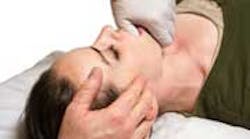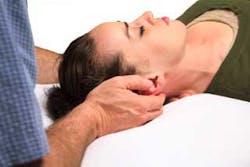Several years ago, I began studying under Dr. Racabado, a world-renowned physical therapist from Chile, who specializes in TMJ and temporomandibular disorders (TMD). The results of a skilled, specialized physical therapist who works in conjunction with a dentist has yielded remarkable results for the patient who suffers from TMD, limited opening, or injuries from accidents. On average, there is an 85% success rate for patients who report relief and improvement with their jaw issues. With such a high favorable outcome from treatment, it is a surprise that the relationship between dentists and skilled physical therapists is not more utilized and recognized. This gap is preventing a paradigm shift that needs to occur in which dentists work with a skilled TMJ therapist much like an orthopedic surgeon works hand in hand with a physical therapist.
Complicating the issue, therapists are a referral-driven industry: no referral=no patient. As a result, therapists have a hard time saying “no” to a referral, so if a dentist refers a patient, that patient will be seen. The drawback in this situation is that the therapist you just sent your patient to will, in all likelihood, be lacking the proper training. The therapist will perform a shotgun approach, and you will form an opinion of utilizing therapy. Depending on the success of treatment and your (and your patient’s) experience, your opinion and inclination for future referrals could be biased. If you want to work with a therapist, I would suggest taking the time to find one with the proper training. Call the clinics in your area and ask if they have anyone with specialized training in TMJ; if not, see if they know of anyone who does.
In upcoming articles, I will talk more specifically about how we treat TMJ disorders and the influence the upper cervical spine, posture, and the joint itself have on the condition of TMD.











